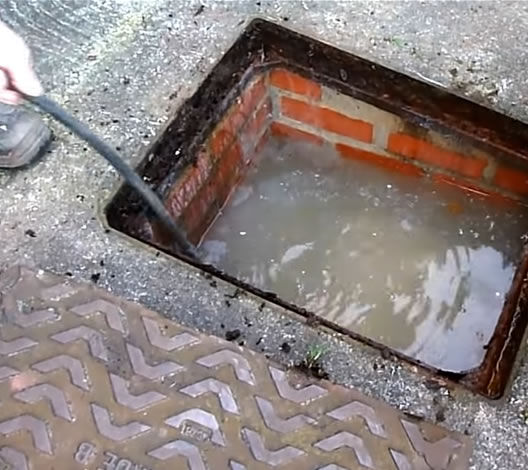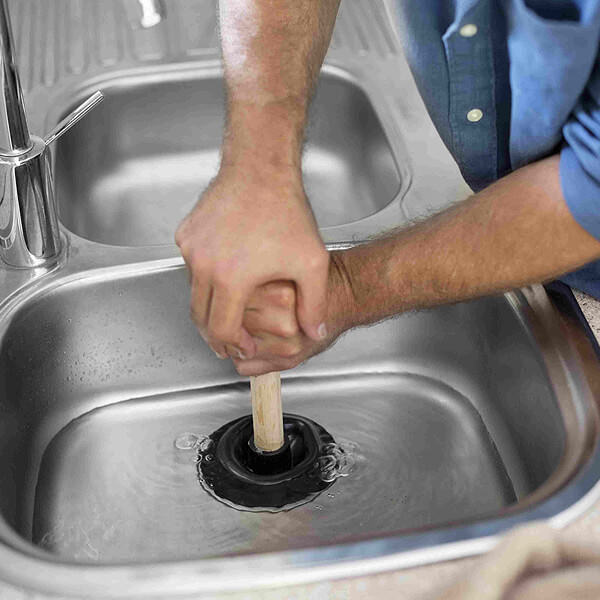Listed here down the page yow will discover additional dependable information and facts related to 8 Tips For Clearing A Blocked Drain.

Introduction
Managing a blocked drain can be a discouraging experience, interrupting day-to-day activities and possibly creating damages to your property. Nevertheless, prior to reaching out to pipes specialists, there are actions you can take to attend to the problem on your own. In this overview, we'll discover DIY solutions and safety nets to deal with an obstructed drain successfully.
Determining the Issue
The very first step in addressing a blocked drain is acknowledging the signs. Sluggish drainage, gurgling audios, foul odors rising from drains, or water support up prevail signs of a blocked drainpipe. Identifying these signs early can help stop even more complications.
Common Causes of Blocked Drainpipes
Recognizing the factors that add to drain blockages is necessary for effective resolution. Typical culprits include hair, soap scum, grease, food particles, and international items like sanitary products or paper towels. Tree roots getting into underground pipelines can also cause considerable obstructions.
DIY Solutions
For minor obstructions, a number of do it yourself options can be effective. Putting boiling thin down the drainpipe can aid dissolve oil and debris. Sodium bicarbonate and vinegar or a mixture of salt and baking soda can function as all-natural cleaners. Utilizing a plunger or plumbing snake to displace obstructions is one more alternative.
Tools and Devices
Having the right tools on hand can make do it yourself drainpipe cleaning up a lot more reliable. A bettor is a flexible tool for removing obstructions in sinks, toilets, and showers. A pipes serpent or auger can get to much deeper blockages, while drain cleaning chemicals can be used cautiously for persistent obstructions.
Safety nets
To stay clear of future clogs, adopting safety nets is crucial. Mount drainpipe guards or filters to catch hair and particles prior to they get in the pipes. Consistently flush drains with warm water to dissolve grease build-up, and prevent dealing with oil or strong waste away.
When to Call an Expert
While do it yourself services can fix small blockages, particular indicators indicate the demand for professional aid. Relentless blockages, foul odors in spite of cleaning up initiatives, or multiple drains backing up concurrently are warnings that require experienced intervention.
Selecting the Right Pipes Solution
When picking a pipes solution, take into consideration aspects such as experience, licensing, and customer evaluations. Pick a credible plumber with a track record of top quality craftsmanship and clear rates practices.
Cost Considerations
The expense of expert drainpipe cleaning services can vary depending upon the extent of the blockage and the plumbing professional's rates. Demand quotes from several suppliers and ask about any added fees to ensure openness and prevent surprises.
Safety and security Precautions
When attempting DIY drain cleansing, focus on security. Use safety gloves and eyewear to prevent contact with hazardous chemicals or germs. Never mix different drainpipe cleansing products, as this can produce hazardous fumes.
Situation Studies
Real-life examples highlight the efficiency of do it yourself services and the significance of prompt specialist intervention in solving drainpipe obstructions.
Conclusion
By following the suggestions laid out in this guide, you can successfully tackle obstructed drains pipes and protect against future plumbing problems. Whether going with DIY services or seeking specialist help, punctual activity is crucial to keeping a healthy plumbing system and maintaining the stability of your home.
How to Clear a Clogged Drain Yourself (And When to Call In the Professionals)
What Can Clog a Drain
Dirt Skin flakes Hair Grease Soap scum Food Offset pipes Tree roots Small objects Mineral buildup DIY Tricks to Unclog a Drain
You can fix this! Once you have identified the source of the clog (or have a vague idea), you can try one or a combination of these fixes in order to clear your plumbing.
Wire Hanger or Snake
Untangle and clear out hair from a drainpipe with a homemade snake. Use a straightened-out wire hanger with a 90-degree angle hook to locate the clog and drag out any unwanted material.
Remember not to push the clog further down to where the wire hanger cannot reach! If you need to follow up with a plunger, give it a try. Your efforts might be more successful after it’s been wire-snaked.
If you want to get fancy and don’t have a wire hanger to spare, head to the store and pick up a hand-operated drain snake. You can get one for $10-$30. It may save you the hassle, and provide additional length to reach deep into the clogged pipe.
Plunger
A cup plunger has a suction cup attached to a wooden handle. The rubber creates a seal around the drain, and increases the pressure force of the plunger.
Plunge for 30-second increments to loosen the clog. This may need to be repeated over the course of 15-20 minutes. Once plunged, run the water to flush the remaining material out of the drain.
Remember– never use a plunger if you have used a chemical drain cleaner. These chemicals can splash up from the force of the plunger and cause serious injury or burns.
Boiling Water
Hot water can sometimes break up materials into a flushable amount. Dirt, grease, and soap buildup requires heat in order to unstick from surfaces.
Take your kitchen kettle and heat your water to a boil. Once it reaches a rolling boil, pour it directly down the drain into the blockage. Carefully follow with plunging, if necessary.
Don’t worry if this takes more than one try! It can often take multiple kettles and repeated plunging in order to clear a particularly stubborn clog.
Chemical Drain Cleaner
As a last resort, pick up a bottle of chemical drain cleaner. Drain-cleaning chemicals are potent, and not very good for the environment.
You may need to wear protective eyewear in gloves before handling your bottle of chemical drain cleaner. Follow the instructions printed on the bottle, and flush with water as soon as the instructions allow. Do not follow with plunging.
Baking Soda and Vinegar
As a safer alternative to chemical drain cleaner, baking soda and vinegar can create a chemical reaction that clears tough clogs.
Combine one cup of cleaning vinegar with one cup of boiling water, and set aside. Once you have done this, pour half a cup of baking soda down the drain. Give the baking thirty seconds to settle and cover a large portion of the problem drain.
Following the baking soda, pour down your vinegar and hot water solution. Once the vinegar and baking soda combine, the mixture will bubble and fix. Let this reaction fizzle in the drain for about an hour.
After an hour, follow with a kettle’s worth of hot water. The heat and liquid should flush out any remaining material.
When to Call a Plumber
If your DIY attempts haven’t cleared your clog drain, it’s time to call in a professional. It’s not worth losing access to your kitchen sink or high-traffic bathroom. A clog in a vital area can keep you from the things you’d rather be doing, and derail your routine.
Anytime a clog is causing water to spread is a time to call in a plumbing service. What starts out as a little bit of water can quickly grow into serious, expensive water damage.
Additionally, a serious clog can result in burst pipes or serious leaks. Make sure you know when to take it seriously!
https://myguysnow.com/how-to-clear-a-clogged-drain-yourself-and-when-to-call-in-the-professionals/

I found that review on while surfing around the web. Do you know anybody else who is excited about What I learned from trying to deal with a clogged drain? Do not hesitate to share it. Thank you so much for your time invested reading it.
Call Today